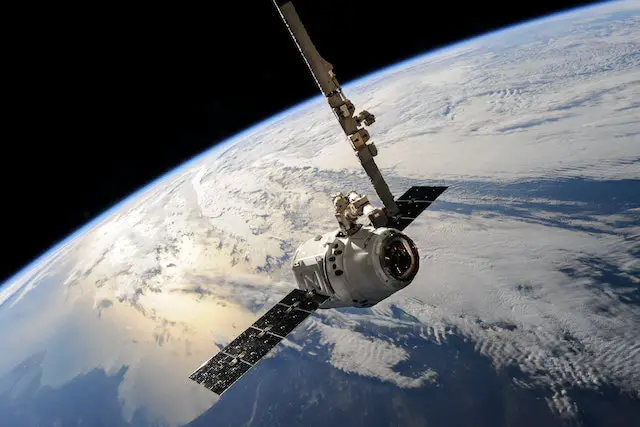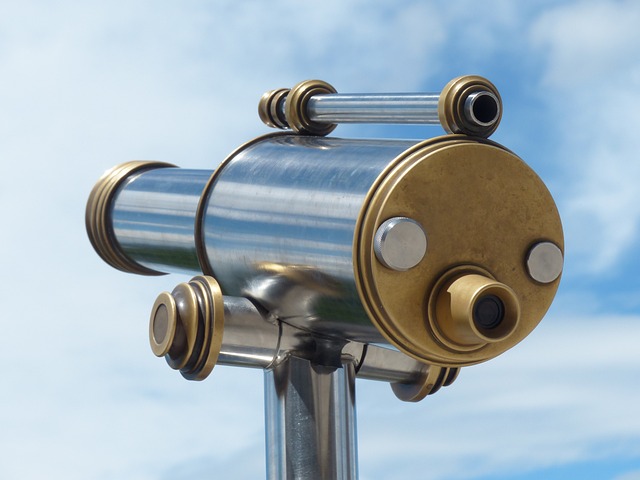Satellites are man-made objects in orbit, while telescopes are optical instruments used to observe distant objects in space, including satellites.
TL;DR Satellites Vs. Telescopes – Key differences
Satellites, with their ability to orbit Earth and relay information back to us, play a crucial role in various applications such as communication, navigation, weather forecasting, and scientific research. They provide real-time data that is essential for everyday life and contribute significantly to advancements in technology.
Telescopes allow us to explore celestial objects located millions or even billions of light-years away. They enable astronomers to study distant stars, galaxies, planets, and other cosmic phenomena. By capturing electromagnetic radiation from these objects and analyzing it through various instruments and techniques like spectroscopy or imaging, telescopes help unravel the mysteries of the universe.
What is a Satellites

A satellite is an artificial object launched into space to perform various functions. These man-made marvels come in different shapes and sizes, from small cubesats to massive observatories.
Equipped with sophisticated instruments and sensors, satellites serve diverse purposes. Some are designed for telecommunications, enabling us to make phone calls or access the internet across vast distances. Others focus on weather forecasting by collecting data on atmospheric conditions, allowing meteorologists to predict storms with greater accuracy.
Satellites also contribute significantly to scientific research. They can monitor changes in environmental factors such as deforestation patterns or sea ice extent. Additionally, specialized satellites equipped with telescopes capture stunning images of distant galaxies and celestial bodies.
In terms of construction and operation, satellites consist of several key components. The power system ensures they have a steady supply of energy through solar panels or onboard batteries. The communication system enables them to transmit data back to Earth or communicate with other satellites.
These technological wonders continue to revolutionize our understanding of the world beyond our planet’s boundaries. Satellites offer invaluable insights into climate changes, enable global connectivity solutions and providing breathtaking views of our universe.
What is a Telescopes?

A telescope is an optical device designed to magnify and capture images of distant objects in space. It works by capturing and focusing light or other forms of electromagnetic radiation.
The basic components of a telescope include a primary mirror or lens that collects incoming light, an eyepiece or camera to observe or record the image formed by the primary mirror/lens, and various supporting structures for stability and alignment. Telescopes can be classified into different types based on their design – such as refracting telescopes, reflecting telescopes, radio telescopes, etc.
Refracting telescopes use lenses to bend and focus light onto an eyepiece, while reflecting telescopes employ mirrors instead. Radio telescopes detect radio waves emitted by celestial objects using large parabolic dishes. Each type has its advantages and limitations depending on the specific application.
Telescopes are invaluable tools for astronomers as they allow us to explore distant galaxies, study stars and planets within our own galaxy, observe celestial events like supernovae and comets, and even search for signs of extraterrestrial life. They provide us with detailed images and data that help unravel the mysteries of our vast cosmos.
In addition to astronomical research purposes, telescopes also play important roles in fields like physics (e.g., studying gravitational waves), meteorology (e.g., weather satellites), military surveillance (e.g., spy satellites), telecommunications (e.g., communication satellites), among others.
Satellites Vs. Telescopes – Key differences
| Aspect | Satellites | Telescopes |
|---|---|---|
| Purpose | Artificial objects placed in orbit around Earth or other celestial bodies for various purposes, such as communication, Earth observation, navigation, and scientific research. | Optical instruments designed to observe distant objects in space, including stars, planets, galaxies, and other celestial phenomena. |
| Location | Orbit Earth or other celestial bodies, typically in space. | Located on the Earth's surface or in space-based observatories. |
| Mobility | Mobile in orbit and can change their positions or orbits as needed. | Generally fixed in place and observe specific regions of the sky. |
| Observation Range | Collect data and images from space and transmit them to Earth. | Collect and magnify light from celestial objects, allowing astronomers to study them in detail. |
| Main Function | Serve various practical purposes, including communication, navigation, Earth monitoring, and scientific research. | Primarily used for astronomical and astrophysical research, studying celestial objects and phenomena. |
| Examples | Communication satellites (e.g., GPS, communication satellites), Earth observation satellites (e.g., weather satellites), scientific satellites (e.g., Hubble Space Telescope). | Optical telescopes (e.g., refracting telescopes, reflecting telescopes), radio telescopes, and space telescopes (e.g., Hubble Space Telescope). |
| Power Source | Equipped with solar panels to generate electrical power from sunlight. | Typically rely on external power sources, such as electricity for ground-based telescopes or batteries for portable telescopes. |
| Operators | Controlled and operated by organizations, governments, or private companies. | Operated by astronomers, observatories, universities, or research institutions for scientific purposes. |
| Data Transmission | Transmit data and images to Earth-based receivers. | Generate images and data for analysis by astronomers and scientists. |
| Impact on Science | Contribute to various fields, including telecommunications, Earth science, meteorology, and space exploration. | Fundamental tools for advancing our understanding of the universe, uncovering astronomical mysteries, and making scientific discoveries. |
Real-world Applications and Uses of Satellites and Telescopes
Satellites
- Communication: Communication satellites enable global telecommunications, including television broadcasts, internet access, and long-distance phone calls.
- Navigation: Navigation satellites like the Global Positioning System (GPS) provide accurate location and timing information, vital for navigation in transportation, logistics, and geolocation services.
- Earth Observation: Earth observation satellites monitor weather patterns, track natural disasters, study climate change, and aid in agriculture, forestry, and urban planning.
- Scientific Research: Scientific satellites, such as the Hubble Space Telescope or space observatories like Chandra, Fermi, and James Webb Space Telescope, observe distant celestial objects, study the universe’s origins, and provide insights into cosmic phenomena.
- National Security: Satellites are used for military surveillance, reconnaissance, and intelligence gathering, enhancing national security and defense capabilities.
- Environmental Monitoring: Satellites collect data on environmental factors, such as air quality, ocean temperatures, deforestation, and pollution levels, supporting environmental conservation and management efforts.
- Search and Rescue: Satellites equipped with distress beacons assist in locating and rescuing individuals in emergency situations, especially in remote or maritime areas.
Telescopes
- Astronomy: Telescopes are fundamental tools for astronomers to observe stars, planets, galaxies, and other celestial objects, advancing our understanding of the cosmos and making scientific discoveries.
- Space Exploration: Telescopes like the Hubble Space Telescope capture stunning images of distant objects and aid in the planning and monitoring of space exploration missions.
- Meteorology: Ground-based and space-based telescopes are used to study the Earth’s atmosphere, monitor weather patterns, and gather data for weather forecasting.
- Medicine: Medical telescopes, such as endoscopes, allow doctors to visualize and perform minimally invasive procedures inside the human body.
- Manufacturing and Quality Control: Telescopic inspection tools are used in manufacturing processes to examine and ensure the quality of products, especially in the automotive and aerospace industries.
- Education: Telescopes in schools and observatories provide educational opportunities for students to learn about astronomy and the universe.
- Security: Telescopic surveillance cameras are employed for security and surveillance purposes, such as monitoring public areas, borders, and critical infrastructure.
Image Credits
Featured Image By – NoName_13 from Pixabay
Image 1 By – Photo by SpaceX
Image 2 By – Hans from Pixabay









